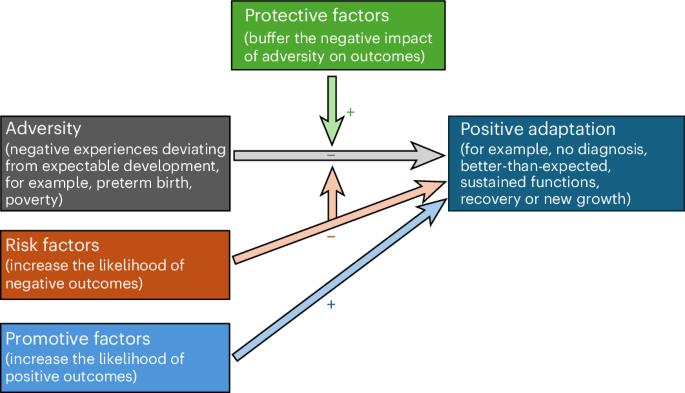A systematic review of conceptualizations and statistical methods in longitudinal studies of resilience
IF 8.7
引用次数: 0
Abstract
Resilience research seeks to understand how protective factors interact with adversity to yield positive outcomes over time. However, inconsistent conceptualizations and diverse methodologies limit comparability across studies. In this systematic review (preregistered on PROSPERO CRD42019138732 ), we examined 193 longitudinal psychosocial resilience studies published over the past 30 years, including 805,660 participants across all age groups. We analyzed (1) conceptualizations of resilience as a trait, outcome or process; (2) statistical approaches (variable-centered, person-centered or combined); (3) types of models and their relationship to adversity (for example, protective, promotive, vulnerability, differential susceptibility); and (4) heterogeneity in adversity, outcomes and promotive or protective factors. Most studies lacked an explicit resilience definition, and only 32% explicitly defined it as a trait (6%), an outcome (19%) or a process (8%). Variable-centered approaches predominated (85%), with most studies testing moderation and identifying protective/promotive effects, while few supported differential susceptibilities. Adversities were primarily childhood- or family-based, with mental health outcomes most common. Protective factors spanned individual, family and community levels, while neurobiological factors were rarely considered. We offer recommendations from our review to improve clarity and consistency in conceptualizing, operationalizing and interpreting resilience in longitudinal research. This research systematically reviewed 193 longitudinal studies on psychosocial resilience, revealing inconsistent definitions, predominant variable-centered methodologies and a focus on childhood adversities, while highlighting the need for clearer conceptual frameworks and improved operationalization in future investigations.

弹性纵向研究中概念化和统计方法的系统回顾
弹性研究旨在了解保护因素如何与逆境相互作用,从而产生积极的结果。然而,不一致的概念和不同的方法限制了研究之间的可比性。在本系统综述(预注册于PROSPERO CRD42019138732)中,我们检查了过去30年发表的193项纵向社会心理弹性研究,包括所有年龄组的805,660名参与者。我们分析了(1)心理弹性作为一种特质、结果或过程的概念;(2)统计方法(以变量为中心、以人为中心或综合);(3)模式类型及其与逆境的关系(如保护性、促进性、脆弱性、差异易感性);(4)逆境、结果和促进或保护因素的异质性。大多数研究缺乏明确的弹性定义,只有32%的研究明确将其定义为一种特质(6%)、一种结果(19%)或一个过程(8%)。以变量为中心的方法占主导地位(85%),大多数研究测试适度性和确定保护/促进作用,而很少支持差异易感性。逆境主要是基于童年或家庭的,最常见的是心理健康问题。保护因素涉及个人、家庭和社区层面,而神经生物学因素很少被考虑在内。我们从综述中提出建议,以提高纵向研究中对弹性的概念化、操作化和解释的清晰度和一致性。本研究系统回顾了193项关于心理社会弹性的纵向研究,揭示了不一致的定义、主要的以变量为中心的方法和对童年逆境的关注,同时强调了在未来研究中需要更清晰的概念框架和改进的操作化。
本文章由计算机程序翻译,如有差异,请以英文原文为准。
求助全文
约1分钟内获得全文
求助全文

 求助内容:
求助内容: 应助结果提醒方式:
应助结果提醒方式:


